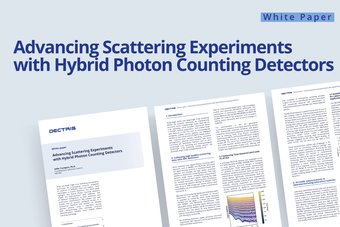White Paper: The perfect match of 24keV MetalJet and CdTe HPC detector
A 2-minute read
High-energy X-ray applications in the laboratory are rapidly evolving, unlocking experiments that were once limited to synchrotron facilities. Bringing these capabilities in-house offers major advantages — greater flexibility, faster iteration, and broader accessibility — but it also comes with technical challenges. Sufficient flux, efficient high-energy detection, and spatial resolution are critical requirements that standard laboratory equipment often struggles to meet.
This white paper is co-authered by DECTRIS and Excillum and outlines how liquid-metal-jet technology overcomes flux limitations of traditional sources and how CdTe detectors maintain efficiency where silicon falls short. With examples including high-pressure XRD and transmission SAXS/WAXS, it demonstrates how this configuration enables faster data collection, better resolution, and access to challenging experiments without the need for beamtime.
Researchers working in materials science, crystallography, or method development will find practical insights on how to extend their experimental range beyond conventional lab limits.
Explore the full white paper to see how you can perform high-energy X-ray experiments directly in-house here:





